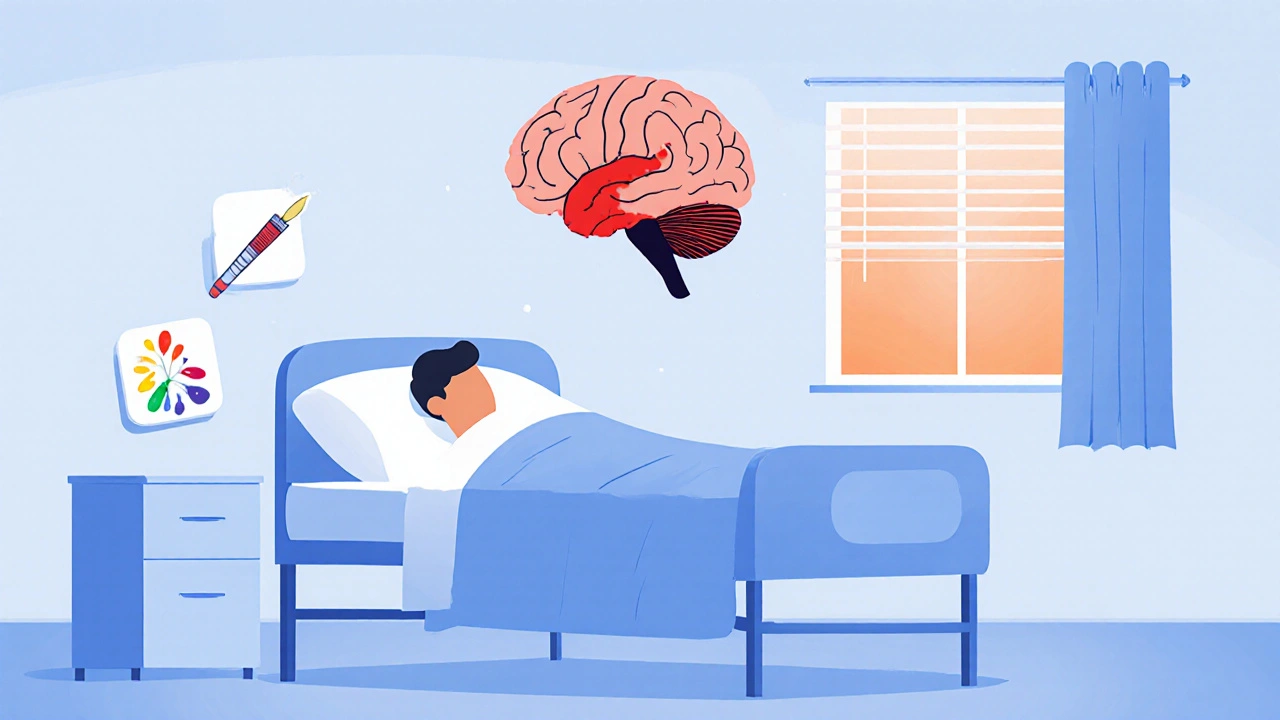
SAH Therapy Selection Tool
Choose Patient Symptoms
Select all symptoms relevant to the patient's recovery needs
Cognitive & Executive Function
Motor & Communication
Emotional & Psychological
Recommended Therapy
Why This Works for SAH Recovery
When a Subarachnoid hemorrhage a bleed in the space surrounding the brain that can cause sudden headache, loss of consciousness, and long‑term neurological deficits strikes, patients and families often scramble for anything that can tip the balance toward a better outcome. Traditional rehab-physical therapy, speech work, and medication-covers the basics, but a growing body of research shows that art and music therapy can fill critical gaps in cognition, mood, and motor recovery.
Why SAH Recovery Is Particularly Tough
Subarachnoid hemorrhage (SAH) usually follows a ruptured cerebral aneurysm. The sudden surge of blood irritates the meninges, raises intracranial pressure, and can trigger vasospasm, leading to secondary brain injury. Even after the bleed is secured, survivors often contend with:
- Executive‑function deficits (planning, sequencing)
- Memory lapses and slowed information processing
- Emotional volatility - anxiety, depression, or post‑traumatic stress
- Fine‑motor weakness, especially on the dominant side
These challenges aren’t just physical; they affect quality of life, return‑to‑work rates, and long‑term independence. Standard rehab targets physical strength, but the brain’s ability to rewire-neuroplasticity-needs a richer, multisensory stimulus.
What Art Therapy Is and How It Works
Art therapy a structured, therapist‑guided use of visual‑art creation to promote healing, self‑expression, and neuro‑rehabilitation leverages the brain’s visual‑spatial networks. By drawing, painting, or sculpting, patients activate the occipital‑parietal pathways while simultaneously engaging limbic structures that process emotion.
Key mechanisms include:
- Neuroplastic stimulation: Repetitive hand‑eye coordination encourages synaptic growth in motor cortex.
- Emotional regulation: The act of externalizing feelings reduces activity in the amygdala, lowering anxiety.
- Cognitive rehearsal: Planning a composition mirrors executive‑function tasks, strengthening prefrontal networks.
Therapists typically tailor sessions to the patient’s abilities-using large‑brush strokes for limited grip strength or digital tablets for those with fine‑motor fatigue.
What Music Therapy Is and How It Works
Music therapy the clinical use of rhythm, melody, and harmonic structures to improve physical, emotional, and cognitive health taps into auditory‑motor coupling. Listening to a steady beat can entrain gait, while active music‑making (drumming, singing) synchronizes bilateral brain activity.
Core therapeutic actions:
- Rhythmic auditory stimulation (RAS) improves walking speed and stride length.
- Melodic Intonation Therapy (MIT) aids speech recovery by pairing pitch patterns with language.
- Group improvisation fosters social bonding, reducing isolation.
Evidence shows that music engages the dopaminergic reward system, which can boost motivation during arduous rehab sessions.
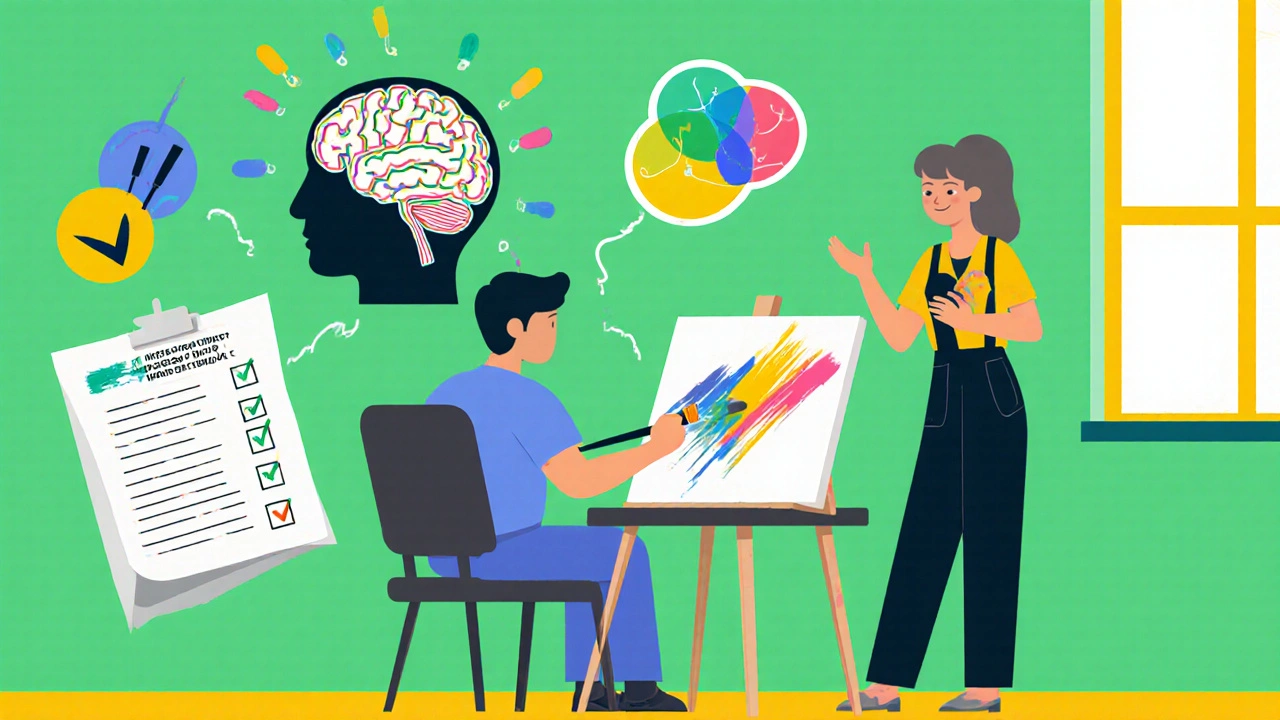
Evidence Linking Art Therapy to SAH Recovery
A 2022 pilot study at the University of Queensland followed 30 SAH survivors who received weekly art‑therapy workshops for three months. Compared with a control group, the art cohort improved by an average of 8 points on the Functional Independence Measure (FIM) and showed a 30% reduction in Hospital Anxiety and Depression Scale (HADS) scores.
Qualitative feedback highlighted three recurring themes:
- “Seeing progress in my drawings gave me hope when my speech was still fuzzy.”
- “The colors helped me name feelings I couldn’t put into words.”
- “Working with a therapist felt safer than trying to paint alone at home.”
Neuroimaging of a subset revealed increased activation in the right dorsolateral prefrontal cortex during post‑session tasks, suggesting that creative expression may directly reinforce executive pathways compromised by the bleed.
Evidence Linking Music Therapy to SAH Recovery
In a 2023 randomized trial involving 45 SAH patients, those who engaged in bi‑weekly rhythmic drumming improved walking speed by 0.22 m/s (a clinically meaningful gain) and scored 5 points higher on the Montreal Cognitive Assessment (MoCA) than the control group.
Another multi‑center study in 2024 demonstrated that melodic‑intonation sessions shortened the average time to achieve functional communication by 18 days. Patients reported feeling “more in control” of their speech because the pitch patterns gave a predictable scaffold.
At the cellular level, researchers measured elevated brain‑derived neurotrophic factor (BDNF) levels after a single 30‑minute music‑listening session, supporting the hypothesis that music boosts neuro‑regeneration.
Practical Ways to Integrate Art and Music Therapy in Rehabilitation
Clinicians often wonder how to add creative therapy without overhauling existing programs. Below is a step‑by‑step guide that works in most hospital or outpatient settings:
- Assessment: Use the Patient‑Reported Outcome Measures (PROMs) for mood (HADS) and cognition (MoCA) to identify gaps.
- Referral: Connect with a certified art therapist (American Art Therapy Association) or music therapist (American Music Therapy Association). If none are onsite, consider tele‑health options.
- Session Planning: Align the creative activity with the patient’s current rehab goal. Example: Pair fine‑motor exercises with watercolor brushwork for hand dexterity.
- Integration: Schedule 30‑minute creative slots immediately before or after physical therapy. The warm‑up effect of music or art can improve engagement in the next session.
- Progress Tracking: Record FIM, MoCA, and HADS scores weekly. Adjust the modality (more rhythm, less visual complexity) based on trends.
For home‑based continuation, simple tools suffice: a sketch pad, colored pencils, a music streaming playlist, or a tabletop drum. Encourage families to join-shared creative time amplifies social support.
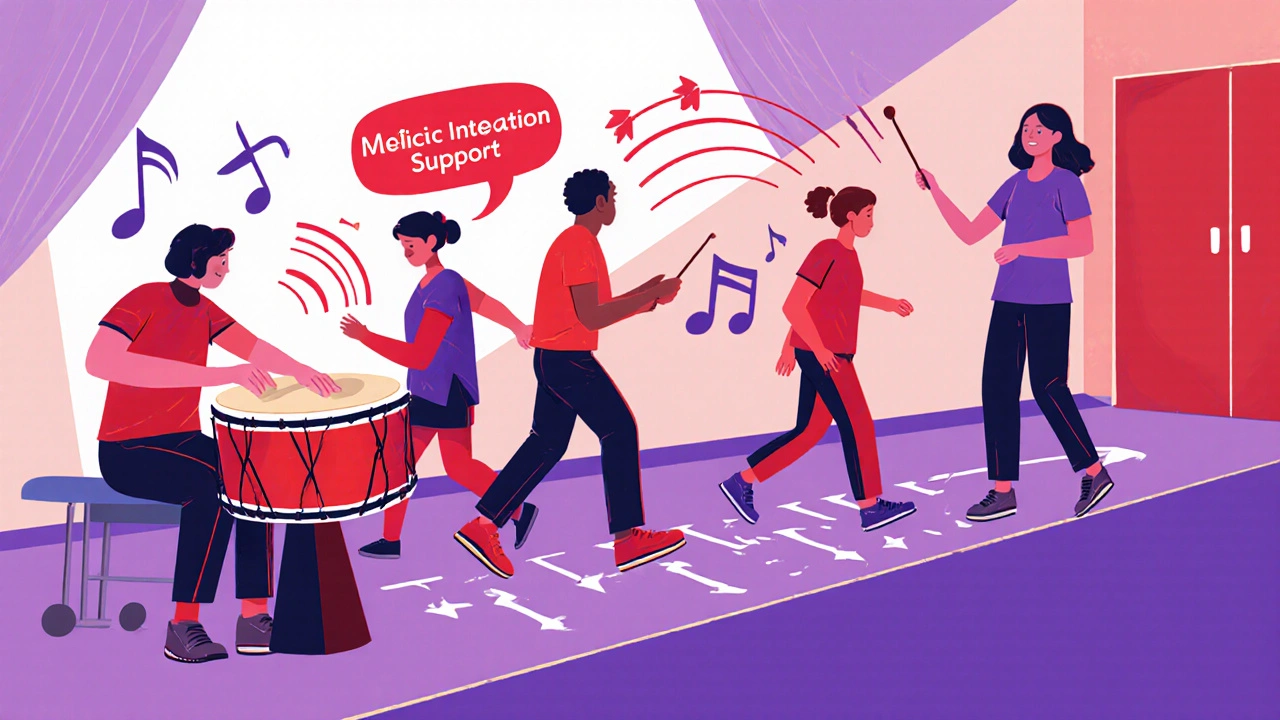
Tips for Patients, Families, and Clinicians
Patients: Start small. A 5‑minute doodle or humming a familiar song can be less intimidating than a full‑blown session. Celebrate micro‑wins (e.g., completing a line of a drawing) to reinforce dopamine release.
Families: Ask the therapist for “home‑practice packets.” Playing a favorite song while the patient does a walking exercise can turn rehab into a bonding ritual.
Clinicians: Document creative‑therapy minutes as part of the rehab dose. Use the same outcome measures you apply to physical therapy to prove effectiveness to insurers.
Comparison of Art Therapy vs. Music Therapy for SAH Recovery
| Aspect | Art Therapy | Music Therapy |
|---|---|---|
| Main neural pathway targeted | Visual‑spatial & motor cortex | Auditory‑motor & language networks |
| Typical session length | 30‑45 min (creation) + 10 min discussion | 20‑30 min (listening/playing) + 10 min reflection |
| Primary outcome improvements | Fine‑motor dexterity, executive function | Gait speed, speech fluency, mood |
| Equipment needed | Paper, brushes, digital tablet (optional) | Instrument (drum, recorder) or audio device |
| Best for | Patients with visual‑spatial deficits or hand weakness | Patients needing rhythm‑based motor cues or speech support |
Frequently Asked Questions
Can art or music therapy replace traditional physical therapy?
No. Creative therapies complement, not replace, standard rehab. They add sensory stimulation and emotional support that boost the effectiveness of physical exercises.
How soon after a SAH can a patient start creative therapy?
Most centers begin once the patient is medically stable-typically within 7‑10 days post‑clipping or coiling. The therapist will adjust intensity based on fatigue levels.
Is a certified therapist required?
Ideally yes. Certified professionals follow evidence‑based protocols and can tailor activities to neurological deficits. If unavailable, a trained rehab nurse can supervise low‑risk activities under remote guidance.
What if the patient dislikes art or music?
Therapy is most effective when the patient enjoys the medium. Offer choices-perhaps percussion instead of singing, or collage instead of drawing. The goal is engagement, not forced participation.
Are there insurance codes for these therapies?
In many countries, CPT code 92508 covers music‑therapy services, while 97003 can be used for art‑therapy when documented as a therapeutic intervention. Always verify with the payer.
Creative therapies are not a silver bullet, but they do provide a scientifically backed pathway to speed up recovery, lift mood, and restore confidence after a subarachnoid hemorrhage. By weaving art and music into the rehab plan, clinicians give the brain a richer palette of signals-exactly what a damaged nervous system needs to rewire.

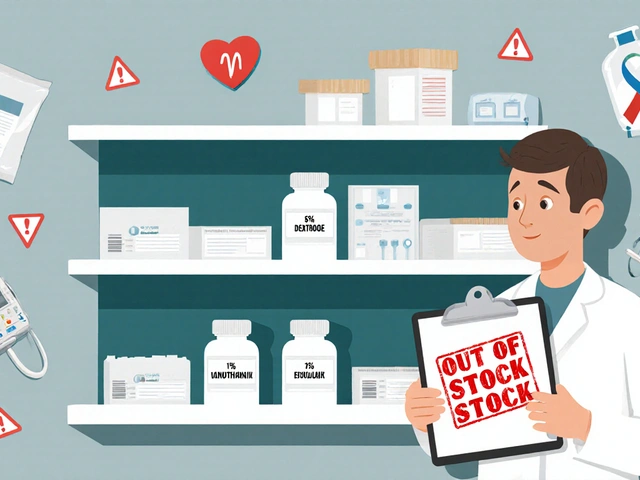
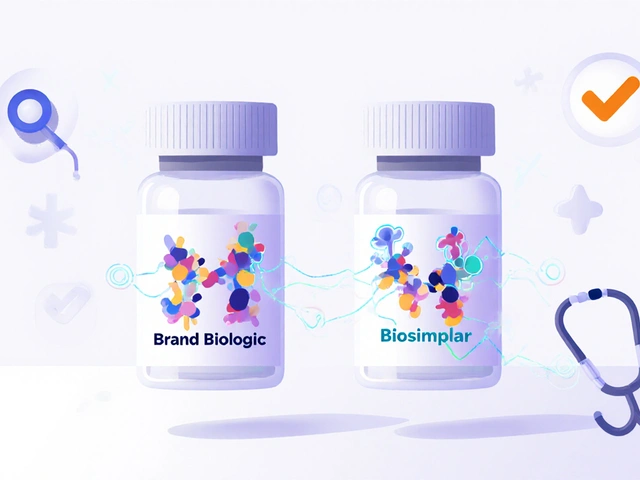
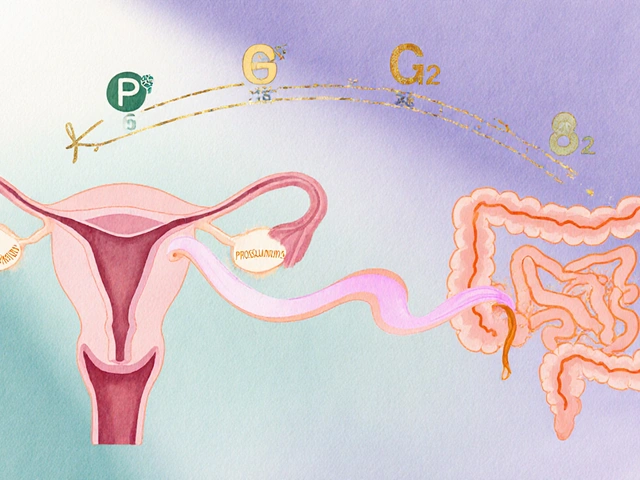
Sebastian Green
October 20, 2025 AT 19:35Honestly, I’ve seen a few patients who were terrified of even picking up a crayon after their bleed, and just a few minutes of guided doodling helped them relax enough to engage in the next PT session. It’s like the brain gets a tiny break from the medical noise and can focus on something creative. Even a simple line‑drawing can light up the visual‑spatial networks and give a confidence boost. When the therapist frames it as “just for fun” the pressure goes away, and the patient can explore without fear. Those little wins add up over weeks, turning a vague sense of hopelessness into a more hopeful outlook.
Andrew Hernandez
October 21, 2025 AT 23:22Art and music tap into brain pathways that meds alone can't reach.
Alex Pegg
October 23, 2025 AT 03:08Sure, the studies sound nice on paper, but let's not pretend that a few paint sessions will magically fix the massive vascular damage caused by a ruptured aneurysm. The neuro‑plasticity buzz is overhyped; most of the measurable gains still come from intensive physical therapy and proper medical management. Throwing a canvas at a patient feels like a gimmick, especially when insurance companies start billing it as a "stand‑alone" treatment. We need to keep the focus on evidence‑based protocols rather than chase every trendy rehab fad.
Rajesh Myadam
October 24, 2025 AT 06:55There’s definitely a place for creative therapies alongside the core rehab program. When patients can express frustration through a painting or find rhythm in drumming, it often eases the emotional burden that can slow physical progress. That said, the therapist should closely track functional outcomes-like FIM or MoCA scores-to make sure the art or music sessions are truly contributing to recovery and not just a pleasant distraction.
Kate McKay
October 25, 2025 AT 10:42One thing I’ve learned as a coach is that consistency beats intensity when it comes to creative rehab. Encourage the survivor to set a tiny daily goal-maybe a five‑minute sketch or humming a favorite tune while doing leg lifts. Celebrate each completion because that tiny dopamine hit keeps the motivation engine running. Over weeks, those modest sessions can cascade into noticeable improvements in fine‑motor control and mood stability. Also, involve the family; a parent strumming a simple rhythm can turn a solitary exercise into a bonding moment, which further reduces isolation.
Israel Emory
October 26, 2025 AT 13:28Integrating art and music into the rehab schedule, for instance, by placing a thirty‑minute creative block right before a physiotherapy session, can act like a warm‑up for the brain,
and you’ll often notice patients engaging more readily with the physical tasks that follow;
the rhythmic cueing from music also helps synchronize bilateral movements,
which is especially useful for those struggling with gait symmetry after an SAH.
Wesley Humble
October 27, 2025 AT 17:15From a clinical perspective, the literature indicates statistically significant improvements in MoCA and HADS scores when music therapy is added to standard care. However, the effect sizes remain modest, and methodological heterogeneity limits generalizability. 📊 Further randomized controlled trials with larger sample sizes are warranted to delineate optimal dosing parameters. Nevertheless, the observed increase in BDNF post‑intervention suggests a plausible neurobiological mechanism underpinning these functional gains.
barnabas jacob
October 28, 2025 AT 21:02Yo, folks need to stop actin like art therapy is a magic bullet, ya know? The whole neuro‑plasticity mumbo‑jumbo can be real, but only if you got the right protocols, not just some doodlin’ session in the hallway. And don’t even get me started on the jargon-people toss “visual‑spatial activation” around like it’s a new meme, when it’s basically just neuro‑science 101. Plus, many of these studies ignore comorbidities, so the real‑world applcation is kinda sketchy.
jessie cole
October 30, 2025 AT 00:48Let me just say, I’ve seen patients who went from barely being able to hold a brush to proudly showing a completed watercolor landscape. The transformation isn’t just about art; it’s about reclaiming a sense of self after a life‑shaking event. When they step back and see their own work, it reinforces the idea that they are still capable, that their brain can create, and that momentum carries over to other rehab goals.
Kirsten Youtsey
October 31, 2025 AT 04:35One must consider the broader sociocultural forces at play: the burgeoning industry of “creative rehabilitation” is not merely a benevolent scientific endeavor but a commodified trend, propelled by pharmaceutical interests seeking alternative revenue streams. The tacit endorsement by elite academic journals often masks an underlying agenda to normalize perpetual dependence on curated therapeutic experiences, thereby diluting authentic patient autonomy.
Matthew Hall
November 1, 2025 AT 08:22Okay, hear me out-what if the whole thing is a distraction? Like, they get us to think “oh, music therapy is healing,” while the real issues-like funding cuts and understaffed wards-stay hidden. It’s theatrical, sure, and it makes for great stories on social media, but does it actually move the needle on survival rates? Just a thought.
Vijaypal Yadav
November 2, 2025 AT 12:08Statistically, the reported effect sizes for both art and music interventions range from small (Cohen’s d ≈ 0.2) to moderate (d ≈ 0.5), depending on the outcome measure employed. It is crucial to control for baseline cognitive status when analyzing post‑intervention improvements, as ceiling effects can obscure true therapeutic impact. Moreover, heterogeneity in session frequency and therapist qualification further complicates meta‑analytic synthesis.
Ron Lanham
November 3, 2025 AT 15:55Let us not forget that the sanctity of rehabilitation lies not merely in the application of novel adjuncts, but in the disciplined adherence to evidence‑based practice. While the incorporation of artistic modalities appears appealing, we must interrogate the veracity of the data presented, for many studies suffer from limited sample sizes, lack of blinding, and potential publication bias. Moreover, we ought to weigh the financial implications of allocating scarce resources toward therapeutics that have yet to demonstrate robust, reproducible outcomes across diverse populations. The ethical consideration of equity also surfaces; patients in underfunded institutions may never benefit from such luxuries, widening the disparity gap. Nonetheless, when a structured, therapist‑guided session adheres to standardized protocols, measurable gains in executive function and mood have been observed, albeit modestly. The neurobiological underpinnings-namely upregulation of BDNF and enhanced synaptic plasticity-offer a plausible mechanistic explanation, yet causality remains elusive. It is imperative, therefore, to adopt a tempered optimism, integrating art and music as complementary, not primary, pillars of SAH recovery. In practice, a balanced regimen that blends conventional physiotherapy, speech therapy, and carefully curated creative interventions may yield the most holistic benefit. Future research must prioritize rigorous randomized controlled designs, larger cohorts, and longitudinal follow‑up to ascertain durability of gains. Only then can we justify widespread implementation without compromising the integrity of our rehabilitative mission.
Deja Scott
November 4, 2025 AT 19:42I appreciate the thorough analysis and would add that even modest, culturally relevant music selections can enhance patient engagement, particularly when language barriers exist. Tailoring the creative content to the individual’s background respects their identity and may amplify therapeutic outcomes.
Natalie Morgan
November 5, 2025 AT 23:28Is there any data on how virtual art platforms compare to in‑person sessions regarding efficacy